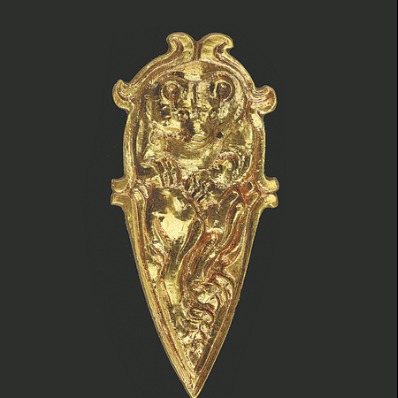



Discoveries ranging from the exotic-looking gold and bronze masks from the Sanxingdui Ruins site in Sichuan province to the mausoleum of a famous emperor from over 2,000 years ago are among the brightest stars of China's archaeological finds last year.
China's Top 10 New Archaeological Discoveries of 2021, the updated version of a widely anticipated annual list that has garnered attention far beyond academic circles, was released on Thursday. The 10 were chosen from among the 20 final-round candidates by 21 of the country's top scholars via open ballot.

"The new findings are vivid demonstrations of the origins of modern human beings and civilizations in China and how a united country with ethnical diversity was formed," Song Xinchao, deputy director of the National Cultural Heritage Administration, said at a news conference on Thursday in Beijing.

The 3,000-year-old Sanxingdui site in Guanghan, Sichuan province, is considered to be the most eye-catching archaeological program in China last year, as several rounds of live broadcasts at the site generated wide public enthusiasm.
Thousands of cultural relics were excavated from the site's six newly found pits. Believed to have been used for sacrificial ceremonies, these items unveiled how a highly developed regional civilization used bronze in ritual worship.
Meanwhile, on the outskirts of Xi'an, the capital of Shaanxi province, findings from the Jiangcun grand tomb helped archaeologists finally confirm that it is the mausoleum of Liu Heng, the emperor known for his diligence in paving the way for the prosperity of the Western Han Dynasty (206 BC-AD 24). The finding also ended a long debate over the whereabouts of the ruler's final resting place.

Besides these archaeological highlights, which prompted wide public discussion, the rest of the entries on the list also represent breakthroughs for related academic study.
For example, at the 5,000-year-old ruins of the city of Jijiaocheng in Hunan province, the unveiled tip of a barn has indicated that at least 22,000 kilograms of rice had been buried there.

In addition, the discovered remains of a wooden structure covering more than 600 square meters amazed experts-not only for its size, but also due to its exquisite construction.
On the other end of the spectrum of ancient Chinese architecture, the Zhongdu site in Anhui province-which dates to the 14th century and is the youngest finding among the 10-showed the ultimate achievement of palace buildings after millennia of development.

Built during the earliest years of the Ming Dynasty (1368-1644) in the hometown of the dynasty's founding emperor, Zhu Yuanzhang, the half-finished royal city was the prototype of the present-day Forbidden City in Beijing. The ruins spread to a space that was even one-sixth bigger than its counterpart in Beijing.

Migration of people and exchanges among different cultures has been a focal point in Chinese archaeology, as some entries on the Top 10 list demonstrate.
At the Piluo Paleolithic site in western Sichuan, more than 6,000 unearthed relics, including abundant stone tools and other evidence of human activities from at least 130,000 years ago, can help people understand how the early migrants to the Qinghai-Tibetan Plateau survived the harsh natural environment.
"This is a world-class finding," Song said. "It can offer key clues to study how early humans got used to high-altitude environments in general."

The Tang Dynasty (618-907) marked a crucial era when different ethnic groups communicated with one another, thus forming a shared community as a united nation.

Noble graveyards of the Tuyuhun people in Gansu province portrayed a prosperous culture through unearthed silk pieces, gold and silver artifacts and other items. The largest number of Tang Dynasty letters ever found at one time, from the Kiyakkuduk beacon towers site in the Xinjiang Uygur autonomous region, not only demonstrated border guards' nostalgia for home and dedication to the country, but also helped fill gaps in historical studies.

"The physical evidence proved the central government's rule in the region then," said Yan Yilin, director of the archaeology department of the National Cultural Heritage Administration.
Wang Wei, president of the Archaeological Society of China, said the Tang sites are also highly inspirational for studies of cross-border cultural exchanges along the Silk Road.
Last year, which marked the centennial of the birth of modern Chinese archaeology, more than 1,700 archaeological projects were conducted nationwide, the most in history.
If you have any problems with this article, please contact us at app@chinadaily.com.cn and we'll immediately get back to you.